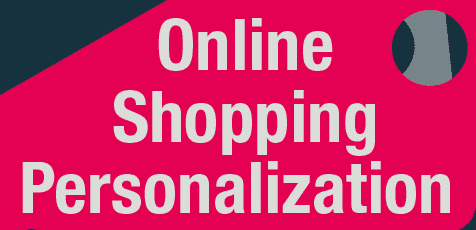As always in an Invesp infographic, the recently posted Online Shopping Personalization & Trends presents a lot of interesting and useful information.
Now it’s up to you to take advantage it. And the infographic gives you all the reason you need to do so by pointing out that almost 60% of ecommerce marketers experience good ROI after personalizing their online stores.
Other data highlighted in the infographic includes:
- Over 55% of shoppers believe it’s easier to find more interesting products on personalized online retail stores and are more likely to return to sites that make product recommendations
- 57% of online shoppers are OK with giving you personal information if they believe it is to their benefit
- 77% of online shoppers would trust businesses more if they explained how personal information is used
You Can’t Personalize Anything Without Personal Data
Of course, you need prospects to convert into customers, to actually buy from you, before you can personalize their experience.
Prospective online customers are notoriously fickle about giving personal information. Back in March, 2000, Business Week highlighted consumers’ concerns about privacy on the net. Their survey found that the vast majority of respondents were either “somewhat” or “very” concerned about the privacy of their personal information online.
More recently, Invesp’s Analysis of Online Consumer Behavior found that about one third of internet users don’t buy online due to privacy concerns.
Getting shoppers to become customers is the first hurdle to personalizing their experience. Here’s how to improve your chances of getting over it:
1. Link to Your Privacy Policy
Numerous tests show the positive effects on conversion rates of a clearly visible privacy policy in close proximity to your CTA. Here’s one from ContentVerve that shows how just 10 words guaranteeing privacy of information increased conversions by almost 20%.
- Write your privacy policy in clear language
- Make sure it 100% guarantees the privacy of customers’ information
- Clearly outline how the information will be used, especially highlighting the personal shopping experience that it can provide
- Let them know they can opt-out at any time. Knowing that it is easy to stop receiving your messages increases the chance of opting in
2. Use Security Certification Logos
Customers aren’t just worried about what you do with their information, they also care about how well you protect it from hackers. Make sure credible security logos from organizations like Verisign/Norton and Trustwave are clearly visible
3. Give Them an Incentive
In a way, it’s not entirely right to say customers are concerned about giving you their personal information. It’s more accurate to say that they have learned that the information has value and they have concerns about giving it to you for free.
Let’s use a hypothetical situation to illustrate this: imagine how many customers you would sign-up and how much of their information they would give if you offered a new car for doing so.
Returning to reality, offering small discounts, free gifts with purchase or other value-added incentives not only encourages prospects to sign-up, but to actually start shopping.
And that’s when you can begin to really personalize their experience and take advantage of the benefits of doing so.




